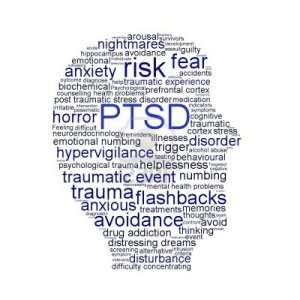Her words left me speechless and heartbroken. I finally sputtered out a few things I’m sure were better left unsaid. I can do that when I’m not sure what to say. Not that I’m proud of it, it’s just what I do sometimes.
I had been asked to speak with a group of single moms, to share my story and offer my perspective on hope and beauty in the midst of struggle. That’s something every single mom wants to know exists. Every parent wants to know it. Every person wants to know it.
When I speak to groups, I don’t hold back much. I tell the good, the bad, and the ugly. I am a firm believer that we all need to know we are not in this mess and muck alone.
There are wounded and brave souls surrounding all of us, ready to help carry our burdens while still struggling to stand up under the weight of their own. It’s a wonder to witness. It’s a privilege to partake. We all have the capacity to become wounded healers if we are willing to accept the painfully glorious task that it is.

(Photo Source: Google Images)
I had told these women about the day I’d had to call 911 on my suicidal teenage daughter. She had spent months descending into a place of darkness and turmoil, and had reached the point where she no longer wanted to be there, to be here, to be alive.
I’d watched her beautiful self lose light and life and the will to live. I had tried, we had tried, so hard to make sense of it, to look ahead and see any glimmer of light, to swim to the top of the abyss and break the surface of the water for a deep breath of clean air.
It wasn’t working. She wasn’t living. Her deepening depression was killing her as I looked helplessly on. So I had called for help.
And I told these weary, heart-hungry moms about the seven armed policemen who had responded to my 911 call, how they walked up the stairway to my daughter’s room to intervene on behalf of life, of her life.
I shared that as terrifying as that moment was and as quickly as its memory brings me to ruin, it was necessary. It was the awful beauty that was needed in that very moment. It was a terrifying early step on the road to assuring my daughter’s safety. I loved her. I had no other choice.
There were plenty of other things I talked about that Saturday morning, but as I sat down to lunch one young mother approached me falteringly.
“I was your daughter,” she said. “I was just like her. Well, I didn’t cut myself like she did, but everything else you said about her, that was me. For a long time, when I was younger and living in my parents’ home, that was me.”
I nodded and smiled sadly, understanding the depth of pain that leads someone to such a place of despair.
“You told that story about all the policemen going up your stairs, you know? About when your daughter wasn’t okay and you knew it so you called 911 for help?”
She paused.
“I wish someone had cared enough to do that for me.”
* * * * *
If someone you know is in crisis, please do not deny or ignore the need. Please do not worry about how it might reflect on you as a parent, friend, family member, or partner. Please know that making a suicidal person mad at you is the least of everyone’s concerns. Do it. Call for help even if they get mad.
In the United States you or your loved one in crisis can call the National Suicide Prevention Lifeline at 1-800-273-TALK(8255).

(Courtesy: www.afsp.org)
Many US cities offer community assistance by dialing 211. There you can find resources to help with substance abuse or addiction, self-harm, mental illness, and any number of situations, such as emergency shelter or help getting school supplies for your child.
Whether you live in the US or elsewhere, find and keep handy emergency numbers, as well as the information for your local mental health center. Here is a list of some international resources to get you started.
“Wait and see” is not an acceptable practice when someone’s life is at stake.
If you come upon a car accident, you don’t stop and wait to see if someone loses a limb before you call 911. If you are with someone experiencing chest pains and arm numbness, you don’t wait to see if a heart attack is really going to occur. You call at the first hint of need, as soon as you spot the crisis.
People dealing with mental health issues deserve the same consideration and assistance.
Care enough to give it.
© Monica Simpson and Help To Hope, 2013






